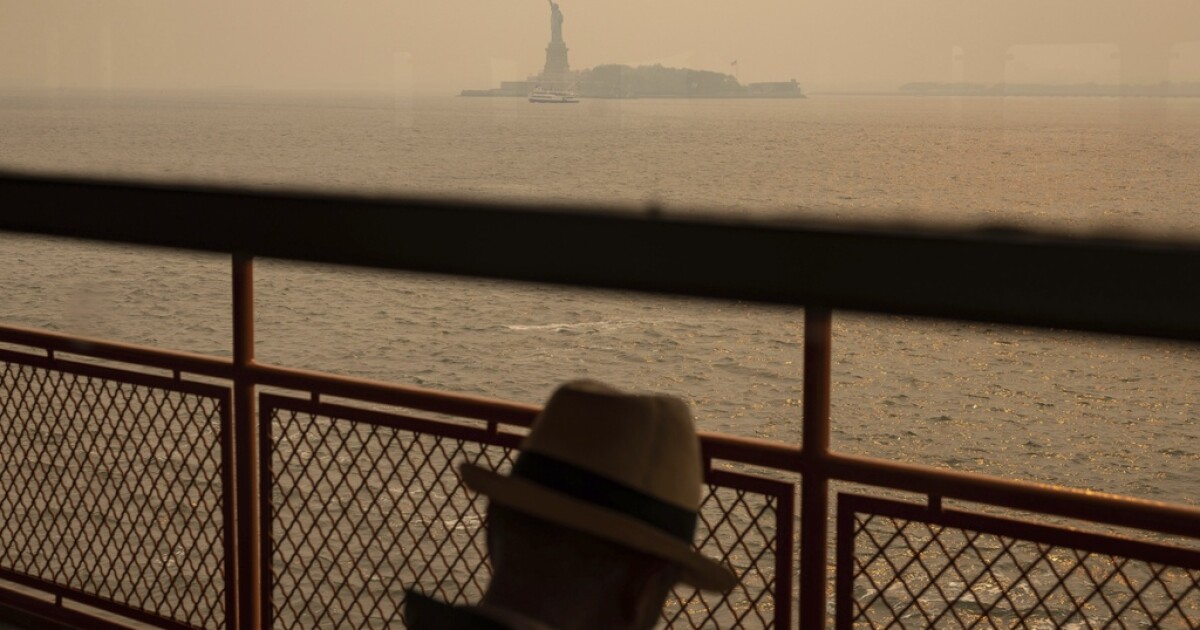
5 Techniques from the Films of Jean-Luc Godard That Changed Cinema
Jean-Luc Godard spent his career reshaping the everyday language of cinema. From Oscar darlings to the latest entry into the MCU, it’s hard to find a film or television series untouched by the influence and innovations of Godard, who died this week at the age of 91. Just consider the narrative and technical choices he made in his very first film, “Breathless”: Jump cuts, natural lighting, long takes, freeze frames, on-location shooting. All unorthodox at the time, yet now the type of thing you could clock across any given night of programming on HBO or FX.
In 2022, who can’t recognize the jittery look of a handheld camera? Who would be alarmed to see an onscreen character directly addressing the camera? Who’s never seen a movie directed by either Quentin Tarantino or Spike Lee? Whether or not Godard was actually the first person to pay homage to an iconic piece of cinema by consciously referencing it within a film’s fictional world doesn’t matter so much as the fact that he was the person who did it in such a way that a whole generation of directors realized the kinds of stories such referentiality made possible.
What is perhaps even more remarkable about Godard is that he didn’t have just one phase of innovation. He constantly saw new visions of cinema, and continued to push and prod at what film could be throughout the course of his long career. From his original manipulation with jump cuts to putting his stamp on 3D, here are five filmmaking techniques Godard helped add to the lexicon of filmmaking.

Jean-Luc Godard
Gamma-Rapho via Getty Images
Jump Cuts
The story behind the jump cuts in “Breathless” has achieved a mythic status; depending on the source, Godard either ran out of film stock or the film was just too long and needed a ruthless editing pass. Whatever the reason, it forced the director to push how much could be removed from a sequence without it falling apart. In “Breathless,” such cuts occur within continuous movement or over dialogue, creating a sometimes jarring sense of dislocation for the viewer and forcing them to read the scene and make connections about the characters with information that doesn’t match up; this can be extra work but it can also be thrilling, and give characters a chance to shape the world of the film around them, as on a long car ride shared by Jean-Paul Belmondo’s small-time thief Michel and his girlfriend, the fledgling reporter Patricia (Jean Seberg). Michel goes on a good long rant and the cuts, all of the back of Patricia’s head, start to speed up alongside his dialogue. The edit abandons the verisimilitude of time unfolding in a linear fashion, but gains a kind of emotional reality.
In that same car ride, Patricia repeatedly asks Michel “Why are you sad?,” but he never really addresses the question. The way the scene is edited forces our brains not to focus on the car ride itself, but on the larger implications of the pieces of it we’re seeing, and how they shape our understanding of who Michel and Patricia are — alone and together. What could be seen as an error of continuity works in practice as a poetic insight into the pair’s relationship. The cuts crackle with a sharpness and a vitality that matches the form of the story to the personality of the characters, and creates a kind of ethos of its own. It gives us a sense of the bigger (i.e. the cultural and the political) ramifications of a moment, even while yeeting us across time and space. Organizing a scene around its most important, if seemingly unconnected, components isn’t nearly as remarkable now as it was in “Breathless,” but Godard got the process going.

“Pierrot Le Fou”
Gamma-Keystone via Getty Images
Handheld Camerawork
The use of handheld cameras doesn’t belong to Godard alone, and certainly doesn’t belong just to him even in his own films, as cinematographer Raoul Coutard worked with the director (and was sometimes pulled along by him in a wheelchair doubling as a dolly) to craft the sense of movement, emotion, and style that Godard’s camera has in everything from “Breathless” to “Contempt.” But they innovated the practice, and imbued it with a palpable sense of perspective. The camera in “Vivre Sa Vie” isn’t just recording Nana playing pinball, it is watching her do it, and watching what it means for her to do it, too. Watching Michel search out Patricia on the streets of Paris and following along behind the pair of lovers looks completely normal now, after everything from “Before Sunrise” to “Once.” But that sense of being in the middle of life alongside the characters — including the rhythmic shift from right to left and back again that occurs as we all walk on the cobbled streets — came out of Godard’s refusal to allow the camera in his film to be neat, ordered, or unobtrusive.
That point of view doesn’t go handheld in Godard’s movies the way it has since gone on to inform and in some ways define contemporary filmmaking, particularly contemporary action movies. But the reasons that Paul Greengrass or Michael Bay love to follow around a guy with a gun pounding pavement are the same ones Godard identified back in 1960: It looks cool. Not visually pleasing, necessarily, or beautifully composed, but cool in the spiritual, existential sense, cool in the way that we pick up intuitively by watching people and seeing the power they have in how they move. Godard’s handheld camera allows us to experience the insouciant energy of his protagonists, and filmmakers have been picking up on the style (in every sense of the word) of how he uses handheld cameras ever since.

Jean-Luc Goddard shooting “Contempt”
Gamma-Keystone via Getty Images
Long Takes
Look. Just watch this shot from “Weekend.” It’s not that Godard was the first person to pull off a big traveling oner, but he understood why you do one maybe better than anybody. “Politics is a traveling shot,” he said, and there’s nothing more political than the use of the technique in “Weekend,” which castigates the absurdity, callousness, ugliness, and violence of capitalism through a married couple’s slow crawl up a traffic jam. But Godard also understands that there’s something that happens when we realize the shot is going long, when we start itching for a cut and it isn’t provided. We start thinking about why we’re being shown what we’re being shown. The longer he holds on a take, the more intellectual work he can make an audience do on their own to grasp for a film’s meaning without providing them any easy answers. There had been efforts to build a whole film in a single shot before, and there have been efforts since, from directors as notable as Alfred Hitchcock and Sam Mendes. But Godard’s use of the long take to draw attention to the cultural, historical, and political worlds that lie behind and beyond the events he’s showing onscreen is at the heart of his (and a lot of other people’s) revolutionary filmmaking.

“The Harder They Fall”
Getty Images
Referentiality
Movies about movies maybe aren’t a genre unto themselves, but it shouldn’t be surprising that filmmakers like to make them. Godard, though, served up metatextuality in a way that was wholly his — until lots and lots and lots of other people started copying him, and iterating on his ideas about the way that movies can help us delude ourselves and do violence with the confidence of a Main Character. The most famous example is, again, “Breathless,” where Michel worships Humphrey Bogart and the tough guys who made up the ranks of film noir’s chain-smoking, hurt/comfort knights in trenchcoats. The homages that Michel and the film pays to Hollywood gangster pictures have an energy and a delight unto themselves. Being able to watch something and understand the reference is yet another way that Godard can make his movies bigger than just what’s onscreen, and filmmakers have been using those techniques for parody, commentary, and plain thrills ever since.

“Numero Deux”
Screen shot
Shooting on Video
Jean-Luc Godard was hardly the first filmmaker to use video or to shoot in Hi-Def, but among major directors he was, as was so often the case, the first to fully embrace the technology and see its unique expressive possibilities. He began experimenting with video in the 1970s, in films like “Ici et ailleurs,” “Numéro deux,” and “Comment ça va,” superimposing video imagery on top of celluloid (and other video images) and slamming the two formats against each other in order to explore how technology transmits and manipulates ideas and history. (Though Godard is famous for having said that cinema is truth 24 frames a second, these films are as much about how movies lie.) At around this same time Godard began directing television with “6 x 2” and “France/tour/détour/deux/enfants,” putting him around 40 years ahead of the era when it would become fashionable for major filmmakers to work in that medium. What’s notable about Godard’s video work in this age and beyond is that he didn’t just utilize it for its lower cost and ease of production; he recognized how it was different from film and took advantage of it, smearing colors across the screen like a painter and creating the kinds of evocative effects Michael Mann would pick up on and develop 30 years later in films like “Collateral” and “Miami Vice.”
Throughout the ’70s and into the early ’80s, Godard would intermingle film and video, often creating video “scripts” for his features ahead of production in a precursor to today’s ubiquitous previsualization. By the end of the decade, he was shooting entire films like “Soft and Hard” and his magnum opus “Histoire(s) du cinéma” on video. Most of these movies came during a period when Godard was not a part of the cultural conversation outside of a small cult of devoted cinephiles, but in 2001 he premiered “Éloge de l’amour” at the Cannes Film Festival, where it won the Palme d’Or and stunned audiences with its gorgeous juxtaposition of black-and-white 16mm film and color DV. Aside from George Lucas and Godard’s old New Wave pal Eric Rohmer, few well known directors were embracing digital imagery at this time, but Michael Mann would follow in 2004, David Lynch in 2006, and Francis Ford Coppola and Brian De Palma would take the plunge in 2007. Now, of course, everyone but a handful of purists with the clout and inclination to insist on film shoots on video, but Godard was on it in 1975 and had mastered the technology when everyone else was just getting started.





























































